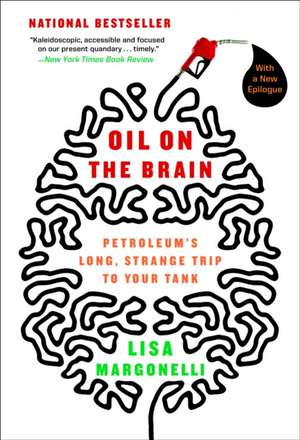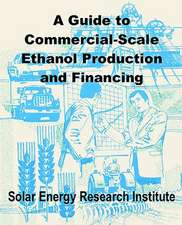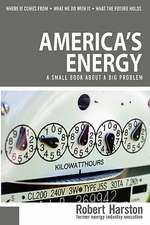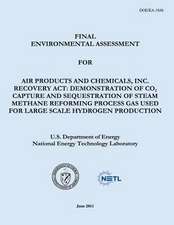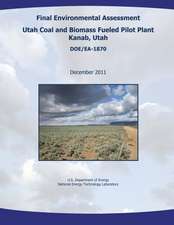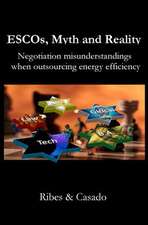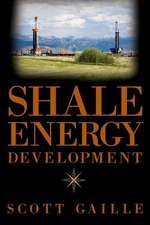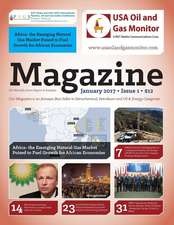Oil on the Brain: Adventures from the Pump to the Pipeline
Autor Lisa Margonellien Limba Engleză Paperback – 31 ian 2008
Vezi toate premiile Carte premiată
ALA Notable Books (2008)
Americans buy ten thousand gallons of gasoline a second, without giving it much of a thought. Where does all this gas come from? Lisa Margonelli’s desire to learn took her on a one-hundred thousand mile journey from her local gas station to oil fields half a world away. In search of the truth behind the myths, she wriggled her way into some of the most off-limits places on earth: the Strategic Petroleum Reserve, the New York Mercantile Exchange’s crude oil market, oil fields from Venezuela, to Texas, to Chad, and even an Iranian oil platform where the United States fought a forgotten one-day battle.
In a story by turns surreal and alarming, Margonelli meets lonely workers on a Texas drilling rig, an oil analyst who almost gave birth on the NYMEX trading floor, Chadian villagers who are said to wander the oil fields in the guise of lions, a Nigerian warlord who changed the world price of oil with a single cell phone call, and Shanghai bureaucrats who dream of creating a new Detroit.
Deftly piecing together the mammoth economy of oil, Margonelli finds a series of stark warning signs for American drivers.
Preț: 107.92 lei
Nou
Puncte Express: 162
Preț estimativ în valută:
20.65€ • 22.08$ • 17.22£
20.65€ • 22.08$ • 17.22£
Carte disponibilă
Livrare economică 27 martie-10 aprilie
Preluare comenzi: 021 569.72.76
Specificații
ISBN-13: 9780767916974
ISBN-10: 0767916972
Pagini: 330
Dimensiuni: 135 x 201 x 19 mm
Greutate: 0.26 kg
Editura: BROADWAY BOOKS
ISBN-10: 0767916972
Pagini: 330
Dimensiuni: 135 x 201 x 19 mm
Greutate: 0.26 kg
Editura: BROADWAY BOOKS
Notă biografică
LISA MARGONELLI is currently an Irvine Fellow at the New America Foundation. She has written for the San Francisco Chronicle, Wired, Business 2.0, Discover, and Jane, and was the recipient of a Sundance Institute Fellowship and an excellence in journalism award from the Northern California Society of Professional Journalists. She is based in Oakland, California.
Extras
1
GAS STATION: Chasing The Hidden Penny
Regular Unleaded $1.61 9/10
Twin Peaks Petroleum sits at a welcoming angle to a busy San Francisco intersection. On this morning in the summer of 2003, a thick fog has crawled over the station, folding each of the eight drivers standing at the pumps in an envelope of cold mist. At the back of the lot sits a garage where a small convenience store glows. On the storefront is a poster of an ebullient snowman clutching a cola, while icicle letters drip the words COLD POP over his head. Inside the convenience store, among the security cameras and parabolic mirrors, the Doritos, cigarettes, and Snapples, jammed into a space no larger than a postal truck, a tall man with dark circles under his eyes appears to doze. His eyelids hang low, twitching; he mumbles; he moves with excruciating deliberation as he counts change.
I am leaning against a shelf holding several grades of motor oil, individually wrapped strawberry cheesecake muffins, and four flavors of corn nuts: picante, regular, nacho cheese, and ranch. I am no more lively than B. J., the droopy manager. And I am recording the flavors of corn nuts in my notebook to stay awake. “Corn Gone Wrong” say the packages. I record that too. I’ve come to the gas station to watch Americans buy gasoline, as a way of understanding how we fit into the trillion–dollar world oil economy. But now that I’m here, I realize I’ve been here before, bought gas so many times myself I feel there’s nothing to see. The fumble, the stuporous swipe of the card, the far–off look: I know them well. Gas stations are everywhere, but when you’re in one, you’re nowhere in particular. Icicle letters are taking shape in my head: WHAT DID YOU EXPECT?
I keep writing: Trojan spermicidally lubricated snugger fit, two Sominex and a folded paper cup, phone cards, batteries, air fresheners printed to look like ice cream sundaes, a greeting card with a picture of a pansy and the words “You’re too nice to be sick.” The customers standing out at the pumps have a preoccupied, anxious look—could they be distracted enough to buy a card that says “You’re too nice to be sick”?
Gas stations are collections of incidental items, impulses, and routines that seem in themselves to be inconsequential but aggregate into a goliath economy when multiplied by the hungers of 194 million licensed American drivers. Corn nuts, for example, are part of $4.4 billion in salty snacks sold at gas station convenience stores yearly, nearly all impulse buys. The hopeful purchase $25 billion in lottery tickets. People with the sniffles spent $323 million on cold medicine at gas stations in 2001. And the faint smell of gasoline near the pumps? In California alone, the amount of gasoline vapor wafting out of stations, as we fill our cars, totals 15,811 gallons a day—roughly the equivalent of two full tanker trucks (1). In the gas station, we’ve collaborated to create a culture of speed, convenience, low prices, and 64–ounce cup holders, which allow us to express what the industry calls our “passion for fountain drinks.” Japanese auto executives have hired American anthropologists to explain the mystery of why the purchase of a $40,000 car hangs on the super–sizing of the cup holder.
And then there is the gasoline: 1,143 gallons per household per year, purchased in two–and–a–half–minute dashes. We make 16 billion stops at gas stations yearly, taking final delivery on 140 billion gallons of gasoline that has traveled around the world in tanker ships, pipelines, and shiny silver trucks. And then we peel out, get on with our real lives, get back on the highway, or go find a restroom that’s open, for Pete’s sake.
With a wave of our powerful credit cards, American drivers buy one-ninth of the world’s crude oil production per day. That makes us elephants in the global oil economy–our needs are felt around the world, from the tiniest villages in Africa, the Amazon, and the Arctic, to the highest towers in Vienna, Riyadh, and New York. When we lick our lips, they open their taps. When we are in a funk, their governments fall. Here in front of the pump, surrounded by buntings in the joyful colors of children’s birthday party balloons, we have the opportunity to be our truest selves in the great, over–the–top drama/business that is the world oil supply chain.
But as you know, buying gas can be done by the living dead. Swipe card, insert nozzle, punch the button with the greasy sheen: Gasoline flows into the tank while money flows out of the bank account. Filling a car seems less like making a purchase than a ritual, a formality that isn’t quite real.
It’s not even clear what we’re buying—gasoline’s fantastic uniformity means one is as good as another. Water doesn’t mix with gas, so beyond occasional traces of vapor, we don’t even have to worry about buying substandard gasoline. And all traces of where the fuel came from are completely erased by the time it gets to a gas pump. Texaco gasoline is no longer from Texas, and gas from Unocal is not from “Cal.” Both companies have been purchased by Chevron, anyway. If gasoline were coffee, we might believe the Baku blend offered a fast but mellow ride.
As if acknowledging the futility of trying to stand out from the pack when 168,987 gas stations are selling essentially an identical chemical mix, stations have adopted a clannish ugliness. Whether they’re in Fairbanks, Alaska, or Pine Island, Florida, they all subscribe to the familiar topography of canopied islands, cheerful plate glass, struggling hedges, and “Smile. You’re being watched by a surveillance camera” signs. Predictable they are, to the very last 9/10ths of a cent, which is permanently printed on every last gas price sign in the land.
The gas station’s blandness is misleading, though. Hidden in its windows, pumps, and hedges are clues to the true nature of the American bargain with gasoline and the enigma of its role in the world.
On the counter in front of B. J. stands a line of purple plastic wizards, stomachs filled with green candy pebbles. Their shiny eyes stare at me expectantly.
At the periphery of my vision, a van enters Twin Peaks yard and parks near the fence. In the time it takes the door to slam, B. J. grows a foot taller, loses his paunch, and becomes a man of action. He snaps the countertop open, bounces into the yard, and lands in front of the van driver in one tigerlike swoop. Words are exchanged. The driver sulkily returns to his van and B. J. returns to the store, shaking his head. People try to ditch their cars in the station and take the bus, he explains, taking his position behind the wizards. “The customer is always right,” says B. J., “but bad people going round.”
Like vapors, bad people always seem to be wafting through the gas station. Last week B. J. ran out to stop a truck that was barreling toward the station’s lighted canopy. The truck driver ignored him and crunched the canopy. Cars have driven willy nilly through the hedges as he watched. Nightly, people break through the chains on the four entrances. Once he found a gun in the hedge, stashed by a kid on the way to juvenile court. His response? Shave the hedges. Every morning he cleans up garbage, cans, and bottles filled with things we won’t discuss. Daily, and constantly, people try to steal: window squeegees, sodas, condoms, money, and phone calls. Behind B. J.’s head are the counterfeit $20 bills the station has intercepted.
People use elaborate schemes to steal gas, he explains. Sometimes they’ll pay for $5 and shut the pump off when it reaches $4.75. Then they return to the clerk, telling him to turn the pump back on, knowing that the pumps don’t turn off after dispensing amounts less than a dollar. Then they fill their tank and drive off. Others play on the sympathies of the attendant or accuse him of trying to cheat them. In stations where people pump before they pay, they often just drive off. The average gas station loses more than $2,141 a year to gasoline theft. Some lose much more.
Think of a gas station as a crime scene before the fact, and you’ll start to appreciate it as a maze engineered for belligerent rats. Hedges, which I’d interpreted as a pathetic attempt at dignity and baronial pretensions, actually eliminate escape routes for would–be robbers, limiting holdups. Many convenience stores buy “target hardening” kits, which include decals imprinted with rulers so that clerks can tell the police how tall the robbers were, two stickers that say “No 20s, no 50s,” two “Thank You” decals, and one “Smile. You are being watched by our video security.”
Even so, crime is always evolving. “After we did target hardening in stores in the 1980s, the crime moved to the pumps—carjackings and abductions,” says Dr. Rosemary Erickson, a sociologist who’s studied gas station crime for thirty years. “Now it’s public nuisance crimes in the parking lots. Gas stations are considered a magnet.” (2) Nearly nine percent of U.S. robberies happen in gas stations and convenience stores, and the average gas station lost $1,749 to robbery in 2004.
Some of the crimes are not about money at all; they’re about freefloating anger. When gas prices are high, more people get “pump rage” and try to drive off without paying for gas. The Indian and Pakistani immigrants who own and staff many stations bear the brunt. After 9/11, people who were angry at some vague combination of OPEC and Osama bin Laden attacked a hundred clerks at 7–Eleven gas stations and convenience stores in a month. Five men were killed for looking “Middle Eastern.” A photo of bin Laden in a 7–Eleven uniform circulated on the Internet. The National Association of Convenience Stores issued a list of tips to discourage customers from attacking employees—including posting flags near the cash register.
In this harsh microclimate, B. J. maintains an impartial vigilance. When a woman enters and asks to use the phone, he activates the indifferent stupor, gesturing vaguely in the direction of a pay phone.
In a less charitable person, working in a gas station would have long ago brought on moral exhaustion and cynicism, but B. J. has created a worldview that embraces the station. “Everything is in the gas station,” he says. “Good people and bad people are here. Not many honest people.” Spending mornings with B. J. gives me time to reconsider the extreme disinterest I’ve noticed in convenience store clerks over the years. B. J. is clearly operating the selective stupor on a very high level—perhaps as a watchful hibernation, or a trancelike sensitivity to the station’s periphery. Anyway, he has perfected the art of being aware of the bad people going round without letting on that he’s awake.
A man comes in carrying a tiny dog and asking for M&M’s; B. J. gives him a big grin.
A woman asks for the restroom. B. J. waves noncommitally at the sign, “No Restroom,” and the woman pixillates back into the fog. When a gnarled old man with a froth of white hair and huge yellow shooting glasses hands him a $10 bill, B. J. says gently, “Hello, my friend, how are you?”
However harsh the gas station microclimate is, it’s also a neighborhood for anyone who wants one. One industry focus group was surprised to find that customers had “deep feelings” for clerks. “Convenience store clerks are at the bottom of the retail ladder,” says Jay Gordon of industry publication C–Store Decisions, “but that’s not how people perceive them. One woman described her local clerk as a “superhero, with six arms, always giving directions, napkins, and keeping things moving. Superhuman.”
One morning B. J. talks about how he left his family’s farm in India in 1984. His family feared he’d be persecuted because he was Sikh, and the family’s oldest son, so he left the country. He went first to Singapore, then Malaysia, Australia, New Zealand, Canada, and finally New Jersey, where he worked in a relative’s gas station. His English is haphazard. “New Jersey. My skin no like cold. Look ugly. My ears turn black.” He grins at his ghoulishness. “I pack up me money and I come here.” California. His family has joined him here. His daughter is a nurse, his son an X–ray technician, and his son–in–law an engineer who’s getting his MBA. Back in India, his younger brother runs the farm. B. J. has a theory about gas stations and life in general: “If I am good all is good. If I am bad all people look bad. I am nice and I have nice kids. If I am bad they will steal…” He explains this to me a few times until it takes on the attributes of a philosophy.
The customers keep coming. They buy energy drinks and power bars and candy and Visine: Everyone spends time in front of the coolers, which are called “the vault.” The name properly recognizes both their position in the store—always opposite the door—and their role in bringing in a high percentage of the store’s profits.
Snapple is advertising a drink involving bananas. The decal on the cooler says “Release Your Inner Chimp.” I look at the stream of distracted people coming into the store and wonder how many of them are attracted by the faux naughtiness implied by “Corn Gone Wrong” and “Release Your Inner Chimp.” Why is it that the coolly rational customers who shop ruthlessly for the cheapest gas turn into formless emotional mush—susceptible to the likes of their “inner chimp”—when they enter the convenience store?
“I make more money selling water than gas,” says owner Michael Gharib. “And the gas gets shipped around the world and goes through a refinery and still my customers want it cheap.” Wearing a pressed pinkstriped Ralph Lauren shirt, Gharib arrives at the station ready to spread his sense of order, compulsively arranging the mints as he talks about the twenty years he’s owned the place. When he started he made his money selling gas with a profit margin of 10 cents a gallon, but as gas margins have fallen, he uses the store’s 25 percent margin to boost the overall business. He moves on to dust the Daffy Duck Pez dispensers, straightens the STP carb cleaner, and leaves the dusty Fritos in a cup alone on the bottom shelf. Onward to the Skittles! Gharib has the shoulders of a weight lifter, and big, liquid brown eyes. When he’s in the store it seems suddenly smaller, its two hundred products ajumble until he personally straightens them. As I watch him, it dawns on me that the thing I’ve thought of as a gas station for the past twenty years is actually more of a Skittles emporium that sells gasoline.
The candy wizards, for example, contain about 50 cents profit. To make that 50 cents selling gasoline, the store would have to sell 10 gallons of gas. (And presumably the wizards are not combustible.) Nationally, sunglasses have a 100 percent markup, ice is 60 percent, candy is 43, and cigarettes are 19. Gasoline’s profitability has been falling over the past few years, reaching just 7 percent in 2004, the lowest in twenty years. It seems that the more ruthlessly we shop for the cheapest gasoline, the more vulnerable we are to the likes of Corn Gone Wrong: Impulse buys make up three-quarters of the $132 billion spent in convenience stores. The gigantic economy of oil marketing comes to one ironic point: Selling gasoline in America requires the assistance of candy wizards.
Running a station is a tough business: One in six gas stations has closed in the last ten years. Gharib has a competitive edge, an attention to the details and balance sheets that has stood him well.
In the early 1980s Mobil owned the station. Gharib, a mechanic, leased it from the company. He had to sell Mobil brand gas but he got a guaranteed profit of 10 cents a gallon, and he ran the garage as a business. He never had to worry about gas prices, maintaining the pumps, or whether the tanks under the station met the latest code. A phone call to Mobil took care of virtually everything. In return, Mobil, like other brands, depended on men like Gharib, who had relationships with their customers, and their cars, to draw in business and sell more gas. Gharib, who was born in Iran and is fluent in American culture, was probably a good draw—he’s friendly, warm, and shrewd. Let me put it this way: His wife is one of his former customers. But the business of selling gas changed. Mobil stopped spending money to keep up the site and then sold it to another brand, which also didn’t put much money in. In the early 1990s the station had just two old pumps. “The brand didn’t see the money in this location,” says Gharib, “but being here ten years I knew the potential—it’s convenient, and half the customers have been coming here for years and years. Firemen, police. Middle class.”
Gharib swung a deal to buy the station, remodeled it, and named it Twin Peaks to make it part of the neighborhood. (He and his wife designed the logo on their honeymoon in Fiji. “There was nothing to do but sit on the beach and scuba dive,” he says. And think about gas stations.) He reopened it as an independent, selling unbranded gasoline at discount rates. As the market got tougher, he added the convenience store. Eventually he leased the garage to another mechanic.
From the Hardcover edition.
GAS STATION: Chasing The Hidden Penny
Regular Unleaded $1.61 9/10
Twin Peaks Petroleum sits at a welcoming angle to a busy San Francisco intersection. On this morning in the summer of 2003, a thick fog has crawled over the station, folding each of the eight drivers standing at the pumps in an envelope of cold mist. At the back of the lot sits a garage where a small convenience store glows. On the storefront is a poster of an ebullient snowman clutching a cola, while icicle letters drip the words COLD POP over his head. Inside the convenience store, among the security cameras and parabolic mirrors, the Doritos, cigarettes, and Snapples, jammed into a space no larger than a postal truck, a tall man with dark circles under his eyes appears to doze. His eyelids hang low, twitching; he mumbles; he moves with excruciating deliberation as he counts change.
I am leaning against a shelf holding several grades of motor oil, individually wrapped strawberry cheesecake muffins, and four flavors of corn nuts: picante, regular, nacho cheese, and ranch. I am no more lively than B. J., the droopy manager. And I am recording the flavors of corn nuts in my notebook to stay awake. “Corn Gone Wrong” say the packages. I record that too. I’ve come to the gas station to watch Americans buy gasoline, as a way of understanding how we fit into the trillion–dollar world oil economy. But now that I’m here, I realize I’ve been here before, bought gas so many times myself I feel there’s nothing to see. The fumble, the stuporous swipe of the card, the far–off look: I know them well. Gas stations are everywhere, but when you’re in one, you’re nowhere in particular. Icicle letters are taking shape in my head: WHAT DID YOU EXPECT?
I keep writing: Trojan spermicidally lubricated snugger fit, two Sominex and a folded paper cup, phone cards, batteries, air fresheners printed to look like ice cream sundaes, a greeting card with a picture of a pansy and the words “You’re too nice to be sick.” The customers standing out at the pumps have a preoccupied, anxious look—could they be distracted enough to buy a card that says “You’re too nice to be sick”?
Gas stations are collections of incidental items, impulses, and routines that seem in themselves to be inconsequential but aggregate into a goliath economy when multiplied by the hungers of 194 million licensed American drivers. Corn nuts, for example, are part of $4.4 billion in salty snacks sold at gas station convenience stores yearly, nearly all impulse buys. The hopeful purchase $25 billion in lottery tickets. People with the sniffles spent $323 million on cold medicine at gas stations in 2001. And the faint smell of gasoline near the pumps? In California alone, the amount of gasoline vapor wafting out of stations, as we fill our cars, totals 15,811 gallons a day—roughly the equivalent of two full tanker trucks (1). In the gas station, we’ve collaborated to create a culture of speed, convenience, low prices, and 64–ounce cup holders, which allow us to express what the industry calls our “passion for fountain drinks.” Japanese auto executives have hired American anthropologists to explain the mystery of why the purchase of a $40,000 car hangs on the super–sizing of the cup holder.
And then there is the gasoline: 1,143 gallons per household per year, purchased in two–and–a–half–minute dashes. We make 16 billion stops at gas stations yearly, taking final delivery on 140 billion gallons of gasoline that has traveled around the world in tanker ships, pipelines, and shiny silver trucks. And then we peel out, get on with our real lives, get back on the highway, or go find a restroom that’s open, for Pete’s sake.
With a wave of our powerful credit cards, American drivers buy one-ninth of the world’s crude oil production per day. That makes us elephants in the global oil economy–our needs are felt around the world, from the tiniest villages in Africa, the Amazon, and the Arctic, to the highest towers in Vienna, Riyadh, and New York. When we lick our lips, they open their taps. When we are in a funk, their governments fall. Here in front of the pump, surrounded by buntings in the joyful colors of children’s birthday party balloons, we have the opportunity to be our truest selves in the great, over–the–top drama/business that is the world oil supply chain.
But as you know, buying gas can be done by the living dead. Swipe card, insert nozzle, punch the button with the greasy sheen: Gasoline flows into the tank while money flows out of the bank account. Filling a car seems less like making a purchase than a ritual, a formality that isn’t quite real.
It’s not even clear what we’re buying—gasoline’s fantastic uniformity means one is as good as another. Water doesn’t mix with gas, so beyond occasional traces of vapor, we don’t even have to worry about buying substandard gasoline. And all traces of where the fuel came from are completely erased by the time it gets to a gas pump. Texaco gasoline is no longer from Texas, and gas from Unocal is not from “Cal.” Both companies have been purchased by Chevron, anyway. If gasoline were coffee, we might believe the Baku blend offered a fast but mellow ride.
As if acknowledging the futility of trying to stand out from the pack when 168,987 gas stations are selling essentially an identical chemical mix, stations have adopted a clannish ugliness. Whether they’re in Fairbanks, Alaska, or Pine Island, Florida, they all subscribe to the familiar topography of canopied islands, cheerful plate glass, struggling hedges, and “Smile. You’re being watched by a surveillance camera” signs. Predictable they are, to the very last 9/10ths of a cent, which is permanently printed on every last gas price sign in the land.
The gas station’s blandness is misleading, though. Hidden in its windows, pumps, and hedges are clues to the true nature of the American bargain with gasoline and the enigma of its role in the world.
On the counter in front of B. J. stands a line of purple plastic wizards, stomachs filled with green candy pebbles. Their shiny eyes stare at me expectantly.
At the periphery of my vision, a van enters Twin Peaks yard and parks near the fence. In the time it takes the door to slam, B. J. grows a foot taller, loses his paunch, and becomes a man of action. He snaps the countertop open, bounces into the yard, and lands in front of the van driver in one tigerlike swoop. Words are exchanged. The driver sulkily returns to his van and B. J. returns to the store, shaking his head. People try to ditch their cars in the station and take the bus, he explains, taking his position behind the wizards. “The customer is always right,” says B. J., “but bad people going round.”
Like vapors, bad people always seem to be wafting through the gas station. Last week B. J. ran out to stop a truck that was barreling toward the station’s lighted canopy. The truck driver ignored him and crunched the canopy. Cars have driven willy nilly through the hedges as he watched. Nightly, people break through the chains on the four entrances. Once he found a gun in the hedge, stashed by a kid on the way to juvenile court. His response? Shave the hedges. Every morning he cleans up garbage, cans, and bottles filled with things we won’t discuss. Daily, and constantly, people try to steal: window squeegees, sodas, condoms, money, and phone calls. Behind B. J.’s head are the counterfeit $20 bills the station has intercepted.
People use elaborate schemes to steal gas, he explains. Sometimes they’ll pay for $5 and shut the pump off when it reaches $4.75. Then they return to the clerk, telling him to turn the pump back on, knowing that the pumps don’t turn off after dispensing amounts less than a dollar. Then they fill their tank and drive off. Others play on the sympathies of the attendant or accuse him of trying to cheat them. In stations where people pump before they pay, they often just drive off. The average gas station loses more than $2,141 a year to gasoline theft. Some lose much more.
Think of a gas station as a crime scene before the fact, and you’ll start to appreciate it as a maze engineered for belligerent rats. Hedges, which I’d interpreted as a pathetic attempt at dignity and baronial pretensions, actually eliminate escape routes for would–be robbers, limiting holdups. Many convenience stores buy “target hardening” kits, which include decals imprinted with rulers so that clerks can tell the police how tall the robbers were, two stickers that say “No 20s, no 50s,” two “Thank You” decals, and one “Smile. You are being watched by our video security.”
Even so, crime is always evolving. “After we did target hardening in stores in the 1980s, the crime moved to the pumps—carjackings and abductions,” says Dr. Rosemary Erickson, a sociologist who’s studied gas station crime for thirty years. “Now it’s public nuisance crimes in the parking lots. Gas stations are considered a magnet.” (2) Nearly nine percent of U.S. robberies happen in gas stations and convenience stores, and the average gas station lost $1,749 to robbery in 2004.
Some of the crimes are not about money at all; they’re about freefloating anger. When gas prices are high, more people get “pump rage” and try to drive off without paying for gas. The Indian and Pakistani immigrants who own and staff many stations bear the brunt. After 9/11, people who were angry at some vague combination of OPEC and Osama bin Laden attacked a hundred clerks at 7–Eleven gas stations and convenience stores in a month. Five men were killed for looking “Middle Eastern.” A photo of bin Laden in a 7–Eleven uniform circulated on the Internet. The National Association of Convenience Stores issued a list of tips to discourage customers from attacking employees—including posting flags near the cash register.
In this harsh microclimate, B. J. maintains an impartial vigilance. When a woman enters and asks to use the phone, he activates the indifferent stupor, gesturing vaguely in the direction of a pay phone.
In a less charitable person, working in a gas station would have long ago brought on moral exhaustion and cynicism, but B. J. has created a worldview that embraces the station. “Everything is in the gas station,” he says. “Good people and bad people are here. Not many honest people.” Spending mornings with B. J. gives me time to reconsider the extreme disinterest I’ve noticed in convenience store clerks over the years. B. J. is clearly operating the selective stupor on a very high level—perhaps as a watchful hibernation, or a trancelike sensitivity to the station’s periphery. Anyway, he has perfected the art of being aware of the bad people going round without letting on that he’s awake.
A man comes in carrying a tiny dog and asking for M&M’s; B. J. gives him a big grin.
A woman asks for the restroom. B. J. waves noncommitally at the sign, “No Restroom,” and the woman pixillates back into the fog. When a gnarled old man with a froth of white hair and huge yellow shooting glasses hands him a $10 bill, B. J. says gently, “Hello, my friend, how are you?”
However harsh the gas station microclimate is, it’s also a neighborhood for anyone who wants one. One industry focus group was surprised to find that customers had “deep feelings” for clerks. “Convenience store clerks are at the bottom of the retail ladder,” says Jay Gordon of industry publication C–Store Decisions, “but that’s not how people perceive them. One woman described her local clerk as a “superhero, with six arms, always giving directions, napkins, and keeping things moving. Superhuman.”
One morning B. J. talks about how he left his family’s farm in India in 1984. His family feared he’d be persecuted because he was Sikh, and the family’s oldest son, so he left the country. He went first to Singapore, then Malaysia, Australia, New Zealand, Canada, and finally New Jersey, where he worked in a relative’s gas station. His English is haphazard. “New Jersey. My skin no like cold. Look ugly. My ears turn black.” He grins at his ghoulishness. “I pack up me money and I come here.” California. His family has joined him here. His daughter is a nurse, his son an X–ray technician, and his son–in–law an engineer who’s getting his MBA. Back in India, his younger brother runs the farm. B. J. has a theory about gas stations and life in general: “If I am good all is good. If I am bad all people look bad. I am nice and I have nice kids. If I am bad they will steal…” He explains this to me a few times until it takes on the attributes of a philosophy.
The customers keep coming. They buy energy drinks and power bars and candy and Visine: Everyone spends time in front of the coolers, which are called “the vault.” The name properly recognizes both their position in the store—always opposite the door—and their role in bringing in a high percentage of the store’s profits.
Snapple is advertising a drink involving bananas. The decal on the cooler says “Release Your Inner Chimp.” I look at the stream of distracted people coming into the store and wonder how many of them are attracted by the faux naughtiness implied by “Corn Gone Wrong” and “Release Your Inner Chimp.” Why is it that the coolly rational customers who shop ruthlessly for the cheapest gas turn into formless emotional mush—susceptible to the likes of their “inner chimp”—when they enter the convenience store?
“I make more money selling water than gas,” says owner Michael Gharib. “And the gas gets shipped around the world and goes through a refinery and still my customers want it cheap.” Wearing a pressed pinkstriped Ralph Lauren shirt, Gharib arrives at the station ready to spread his sense of order, compulsively arranging the mints as he talks about the twenty years he’s owned the place. When he started he made his money selling gas with a profit margin of 10 cents a gallon, but as gas margins have fallen, he uses the store’s 25 percent margin to boost the overall business. He moves on to dust the Daffy Duck Pez dispensers, straightens the STP carb cleaner, and leaves the dusty Fritos in a cup alone on the bottom shelf. Onward to the Skittles! Gharib has the shoulders of a weight lifter, and big, liquid brown eyes. When he’s in the store it seems suddenly smaller, its two hundred products ajumble until he personally straightens them. As I watch him, it dawns on me that the thing I’ve thought of as a gas station for the past twenty years is actually more of a Skittles emporium that sells gasoline.
The candy wizards, for example, contain about 50 cents profit. To make that 50 cents selling gasoline, the store would have to sell 10 gallons of gas. (And presumably the wizards are not combustible.) Nationally, sunglasses have a 100 percent markup, ice is 60 percent, candy is 43, and cigarettes are 19. Gasoline’s profitability has been falling over the past few years, reaching just 7 percent in 2004, the lowest in twenty years. It seems that the more ruthlessly we shop for the cheapest gasoline, the more vulnerable we are to the likes of Corn Gone Wrong: Impulse buys make up three-quarters of the $132 billion spent in convenience stores. The gigantic economy of oil marketing comes to one ironic point: Selling gasoline in America requires the assistance of candy wizards.
Running a station is a tough business: One in six gas stations has closed in the last ten years. Gharib has a competitive edge, an attention to the details and balance sheets that has stood him well.
In the early 1980s Mobil owned the station. Gharib, a mechanic, leased it from the company. He had to sell Mobil brand gas but he got a guaranteed profit of 10 cents a gallon, and he ran the garage as a business. He never had to worry about gas prices, maintaining the pumps, or whether the tanks under the station met the latest code. A phone call to Mobil took care of virtually everything. In return, Mobil, like other brands, depended on men like Gharib, who had relationships with their customers, and their cars, to draw in business and sell more gas. Gharib, who was born in Iran and is fluent in American culture, was probably a good draw—he’s friendly, warm, and shrewd. Let me put it this way: His wife is one of his former customers. But the business of selling gas changed. Mobil stopped spending money to keep up the site and then sold it to another brand, which also didn’t put much money in. In the early 1990s the station had just two old pumps. “The brand didn’t see the money in this location,” says Gharib, “but being here ten years I knew the potential—it’s convenient, and half the customers have been coming here for years and years. Firemen, police. Middle class.”
Gharib swung a deal to buy the station, remodeled it, and named it Twin Peaks to make it part of the neighborhood. (He and his wife designed the logo on their honeymoon in Fiji. “There was nothing to do but sit on the beach and scuba dive,” he says. And think about gas stations.) He reopened it as an independent, selling unbranded gasoline at discount rates. As the market got tougher, he added the convenience store. Eventually he leased the garage to another mechanic.
From the Hardcover edition.
Recenzii
“If you drive a car, you must read this book.” —Mary Roach, author of Stiff
“By giving voice to the people who are the links in the global oil chain, Margonelli invites us to leapfrog all the rhetoric, dry statistics, and dire pronouncements about oil in order to truly understand it.” —Fast Company
“Hugely enjoyable, compulsively readable, and brilliantly reported.” —Po Bronson, author of What Should I Do with My Life?
“From the corner gas station to the oil fields of Nigeria, there couldn't be a better traveling companion than Margonelli. She's fast, fearless, funny, and a brilliant observer."
—Barbara Ehrenreich, author of Nickel and Dimed
“By giving voice to the people who are the links in the global oil chain, Margonelli invites us to leapfrog all the rhetoric, dry statistics, and dire pronouncements about oil in order to truly understand it.” —Fast Company
“Hugely enjoyable, compulsively readable, and brilliantly reported.” —Po Bronson, author of What Should I Do with My Life?
“From the corner gas station to the oil fields of Nigeria, there couldn't be a better traveling companion than Margonelli. She's fast, fearless, funny, and a brilliant observer."
—Barbara Ehrenreich, author of Nickel and Dimed
Descriere
Starting at a local gas station, Margonelli sets off to meet the people behind the pump, who lead her deep into the economics, politics, chemistry, and culture of petroleum. Along the oil supply chain, she finds unexpected delights and troubling contradictions.
Premii
- ALA Notable Books Winner, 2008
